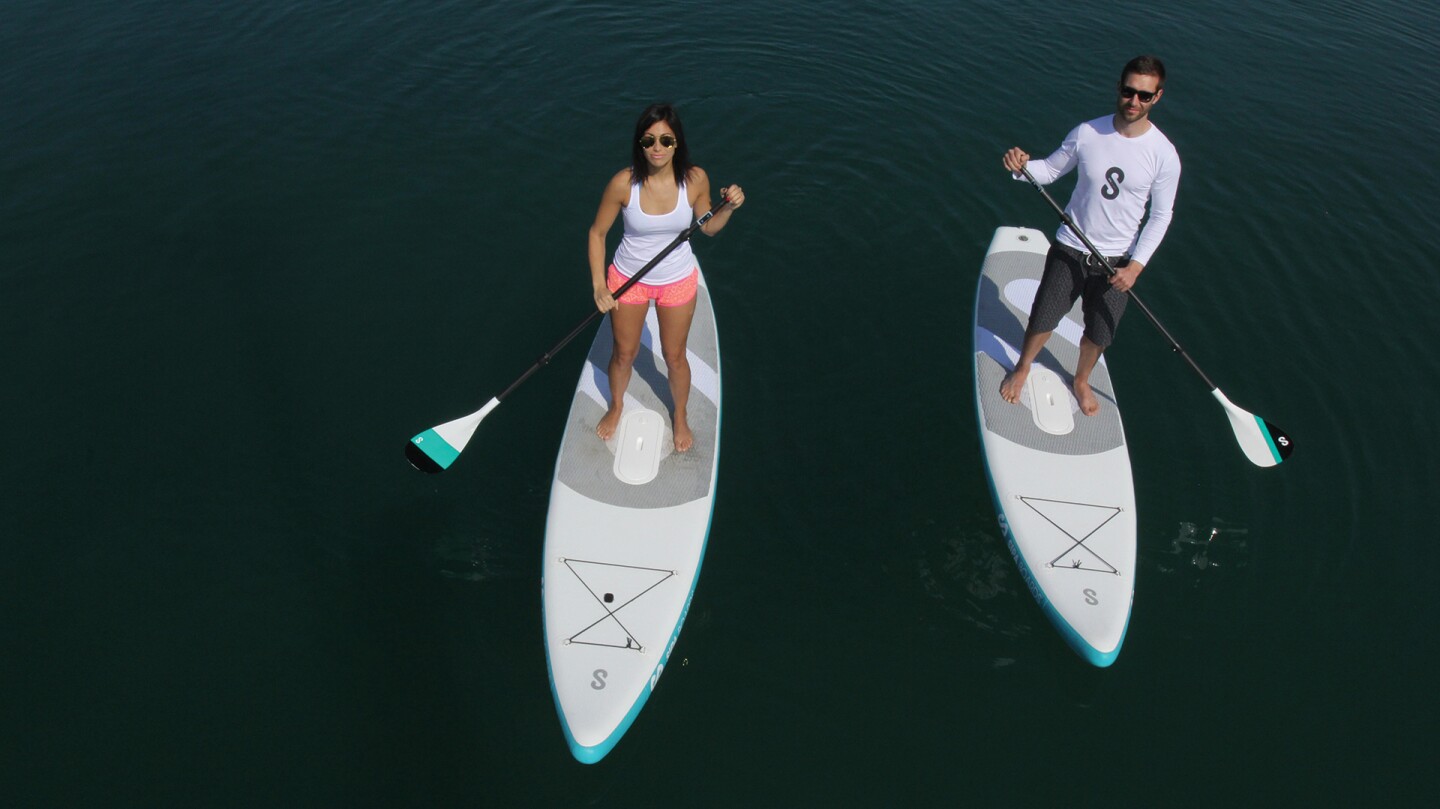While stand-up paddleboards are usually a lot of fun to use, they can be a hassle to transport and store. That's why we've seen ones that can be folded up and disassembled. The SipaBoard, however, takes yet another approach – it's inflatable. An onboard electric motor pumps the air into it for you, plus it also powers an integrated jet drive that provides paddlers with a boost.
The motor is wirelessly controlled using waterproof buttons on the shaft of the included paddle. This lets users choose between five different drive speeds once they're on the water. Its maximum speed is 3.5 knots.
One charge of the removable battery should be good for about three hours of cruising at 2 knots. Of course, the board could also be manually paddled to extend that time.
Should the user fall off, the motor will automatically cut out once separated from the paddle by more than a few meters. The jet propulsion system is recessed within the underside of the deck, and protected by a mesh covering.

Once inflated (which takes less than five minutes), the SipaBoard's double-layered hull is claimed to be "rock-hard" and resistant to punctures or abrasions.
The whole kit and kaboodle weighs in at 13.6 kg (30 lb), and is said to fit into a backpack or the back of a car when deflated.
If you're interested, the Slovenian designers of the SipaBoard are currently raising production funds on Kickstarter. A pledge of US$1,290 will get you a board, when and if they're ready to go. The planned retail price is $2,190.
The SipaBoard can be seen in action, in the video below.
Sources: SipaBoards, Kickstarter







